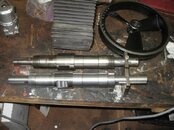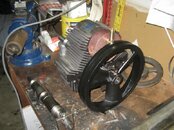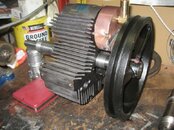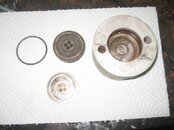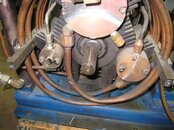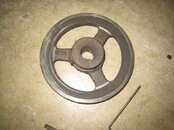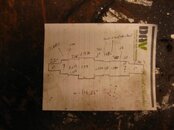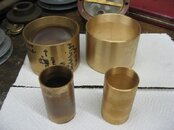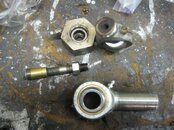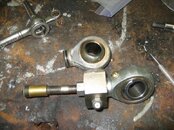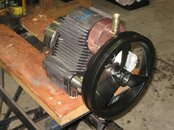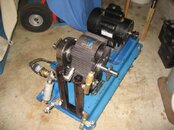Ok, just as a shout out to good folks, I've had lots of help from Eric Zensius and Iain Middlebrook of Rix. Thanks for your patience guys.
Here's a shot of the heads and drive pulley that started my road less traveled. For those not familiar with a Rix, this is what's behind the drive pulley when you pull it off the crank and thus going clockwise: 3rd, 1st, and 2nd stage heads, crankshaft in the middle. The big frowny face on the 1st stage, vertical line on the 2nd, and the bit-off center plug and allen bolts on the 3rd is not what you want to great you. You can also see a discoloration on the crank if you look close - that's a mix of whats left of the chrome plating and worn base metal. After a lot of thought and some discussion, I decided to TIG weld up the crank journal and recut it. The welding went fine, but it proved to be a mistake. Despite pre- and post heat to 500F, it warped the crank about .010" end to end. Max run out is +/-.0025". I suspect that that's measured with the bearing pads chucked and not and end because that would make sense, but either way, I was out. The crank might have been out before I worked it (not sure) because I didn't natsass mic it properly prior to lighting up. My subsequent rebending efforts proved futile despite some serious hydraulic persuasion, thus I resigned myself to the lathe (a new crank though available, is prohibitive). What I should have done was JB weld the pulley pad and recut that since the stuff is hard as rock, but I realized that about 30mins too late. Curse words and head-slapping followed.....





